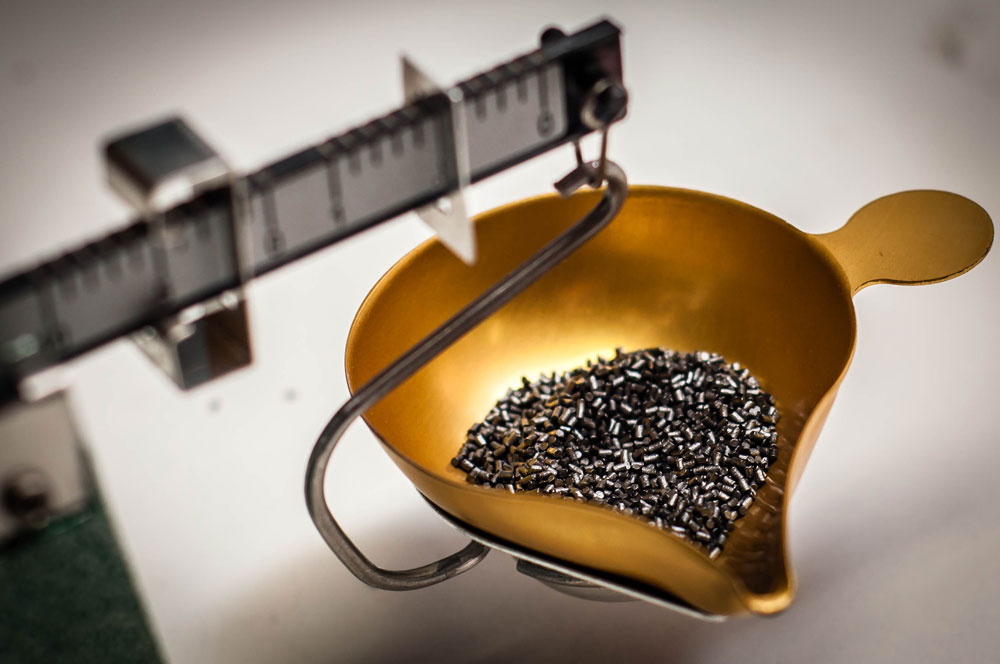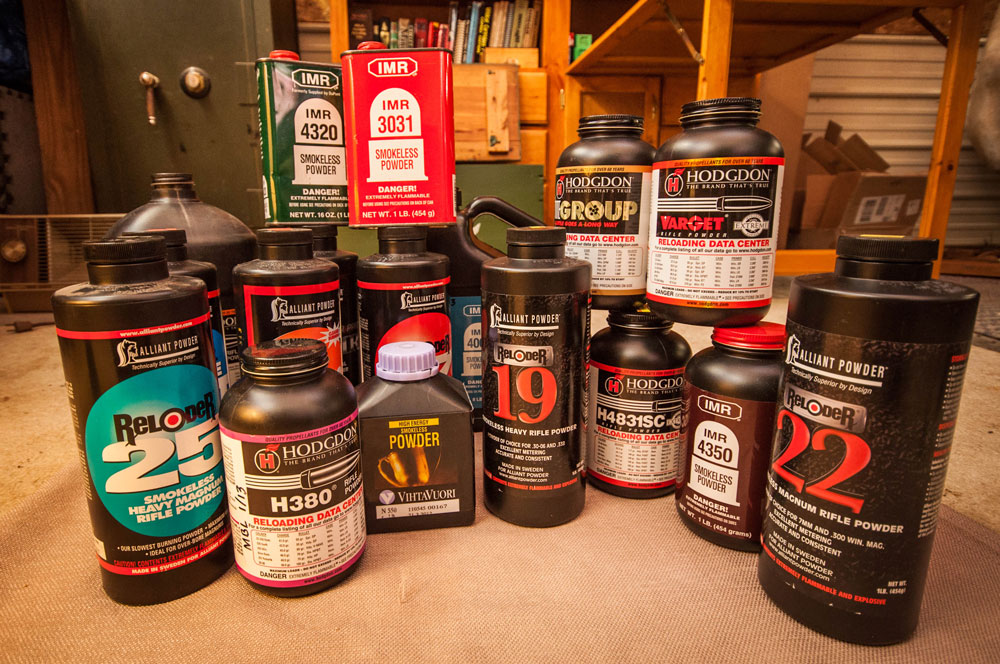

As a reloader, the proper gunpowder for the cartridge you’re loading is an important choice. It can make or break the accuracy of the load or obtain (or not obtain) the velocity at which you are aiming.
Researching the various properties of the canister grade powders available to us handloaders is very important, and much of this data is available in the myriad of reloading manuals that are published or available on powder companies’ websites. Having a pretty good handle on burn rates of smokeless powder will also help you make an informed decision. Hodgdon Powders has a great burn-rate chart on their website, which I refer to often.
Certain powders go hand in hand with some cartridges; the .45 Colt and Unique, the .308 Winchester and IMR 4064, the .22-250 Remington and H380. However, some powders just aren’t available during this ammunition and component crunch, and I hope that situation reverses itself soon. We reloaders must make do with what we’ve got. Understanding powder behavior, and the burn rate chart, can help you find a suitable replacement powder.
Pistol cartridges tend to be more forgiving than do rifle cartridges. There are many powders that can be used to obtain similar results in your pistol cartridge, with a minimum of effort. I like to pick a powder that is rather universal, like the aforementioned Unique, or maybe Bullseye or TiteGroup. They work in all of the handguns I shoot, and they give me the flexibility I like.
Rifle cartridges, and rifles as well, tend to be a bit more finicky. The high pressures that they generate, and the high velocities they attain, tend to magnify differences in powder behavior. Some, like the .308 Winchester, the .30-06 Springfield, and the .270 Winchester tend to work well with a multitude of powders. The magnum cases usually require the slowest burning powders to achieve the screaming velocities they’re famous for. The varmint calibers tend to be particular also, but when you find that magic recipe, you’ve got it.

Depending on the lineup of rifles you’ve chosen to fill your gun rack, you can choose a powder that can work well with a bunch of different calibers. To illustrate, my own personal battery includes (but is not limited to) a .22-250 Remington, .308 Winchester, .300 Winchester Magnum and a .416 Remington. For all of these cartridges, with their different volumes, velocities, and payloads, I have found an accurate load using IMR 4064. Some powders may have worked better, but in a pinch I know I can make IMR 4064 work for each of them. Now that’s not to say that 4064 is the only powder that will behave that way; it could just have easily been Hodgdon’s VARGET or another powder with a similar burn rate.
Read up on the cartridges you want to load, look at a bunch of reloading manuals and you’ll find that there are several powders that work well with your choice. There’s nothing wrong with having several loads for your favorite pistol or rifle, in the event that your favorite is temporarily unavailable. Keep diligent notes and records of your load development, and you’ll never be stuck without ammunition.
Gun Digest Shooter's Guide to Reloading
Enjoy the improved accuracy of hand-tuned ammunition, and gather the necessary information needed to get started with the reloading process. You’ll benefit from this reloading guide if:
- You want to learn how to reload rifle and pistol ammo
- You need to know the necessary tools required for reloading
- You’d like to learn the benefits of reloading ammo
Also check out:


![Best Concealed Carry Guns In 2024 [Field Tested] Wilson Combat EDC X9S 1](https://gundigest.com/wp-content/uploads/Wilson-Combat-EDC-X9S-1-324x160.jpg)





My problem with reloading are the books. They will show your favorite powder with 2 or 3 different weight bullets but not all, or they wont show the most popular weight bullet for that caliber. The books are expensive especially when your only income is Social Security. I have 3 books and one is almost useless.